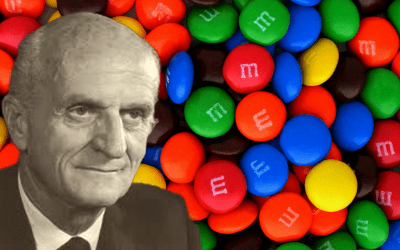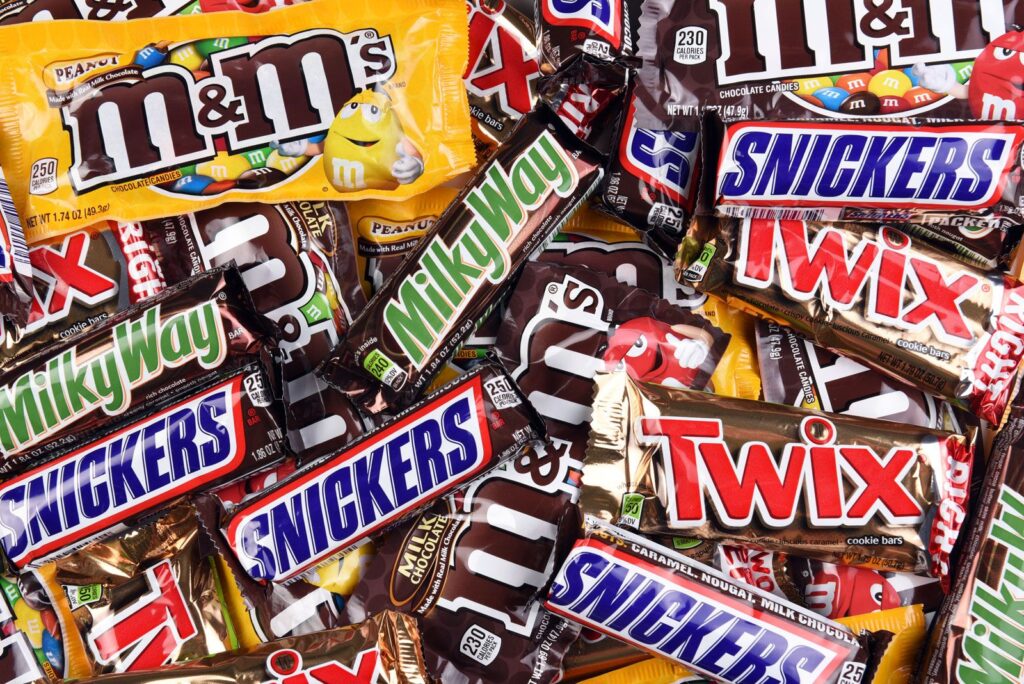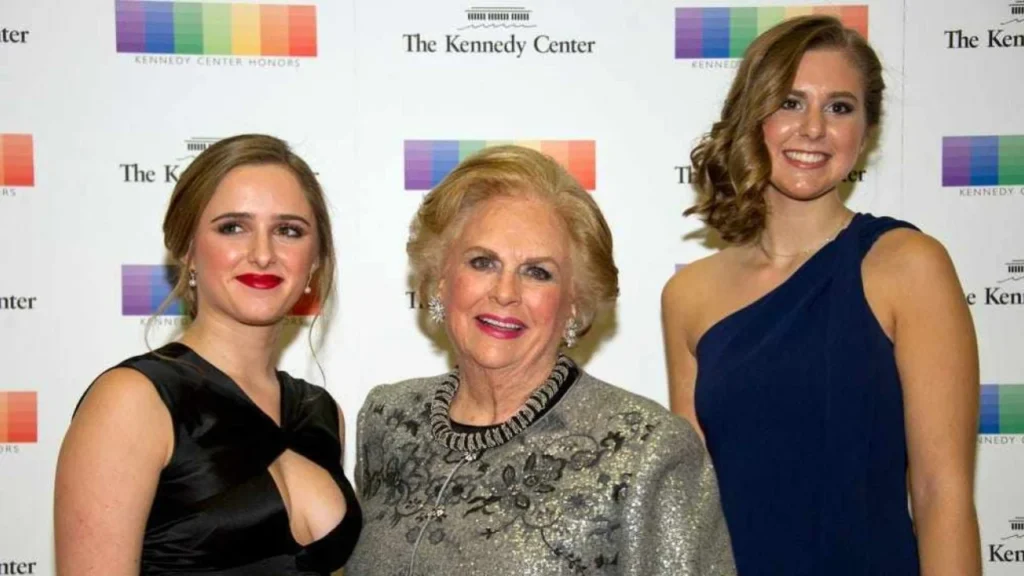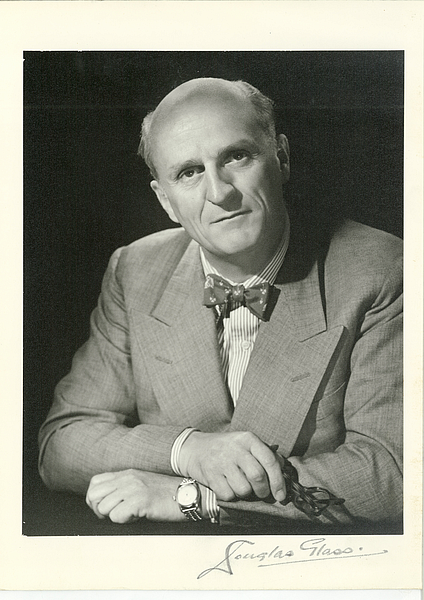Your basket is currently empty!
Read Time: 7 Minutes
Introduction
Behind nearly every checkout aisle in the world sits a legacy most people never think about. While the average shopper tosses an M&M’s packet or a Snickers bar into their basket, few realise they’re engaging with a brand that is part of a massive, private, and incredibly secretive empire. This empire was built by one of the most disciplined and calculated businessmen in American history Forrest Mars Sr.

Unlike flashy billionaires of today, Forrest Mars operated with near-total anonymity. He didn’t grant interviews. He didn’t seek headlines. Yet, his vision helped transform a small family confectionery business into one of the most powerful consumer goods corporations in the world.
In this deep-dive, we explore the fascinating life of Forrest Mars, the empire he built, and the numbers behind a company so dominant it owns both your dog’s dinner and your favourite chocolate.
The Humble Beginnings of the Mars Brand
Mars Inc. began in 1911, when Frank C. Mars, Forrest’s father, started making and selling buttercream candy out of his kitchen in Tacoma, Washington. Business was modest at first. It wasn’t until the launch of the Milky Way bar in 1923 that the company gained traction.
Forrest Mars joined the business but often clashed with his father over vision and management style. After a disagreement, Forrest moved to Europe with just $50, a suitcase, and a fierce ambition to build something bigger than his father ever imagined.
This exile would lead Forrest to create Mars Limited in the United Kingdom and lay the groundwork for global expansion.
Forrest Mars in Europe: A Global Vision Takes Shape
Forrest Mars wasn’t content being just another candy maker. He was obsessed with efficiency, process, and quality. In the UK, he created the Mars Bar, a product inspired by the Milky Way but tailored to European tastes.
He also developed a new food division, where he launched Uncle Ben’s rice and Pedigree Petfoods, showing his ability to diversify beyond confectionery even in the early stages.
Mars Limited quickly gained a reputation for its tightly-run operations and near-military discipline. Employees weren’t coddled. Mistakes weren’t tolerated. Forrest expected excellence in everything from packaging to production, and he got it.
By the time he returned to the United States in 1964 to take over the family business after his father’s death, Forrest Mars brought with him an empire of his own.
He merged the American and European operations into one unified, global force.
The Creation of M&M’s and The Secret War Contract
One of Forrest’s most iconic creations is the candy-coated chocolate known as M&M’s, developed in partnership with Bruce Murrie, son of Hershey executive William Murrie. The name “M&M” comes from “Mars & Murrie.”

Initially created in 1941, M&M’s became a massive hit during World War II, when they were supplied exclusively to U.S. soldiers because of their ability to withstand heat and travel well without melting. This gave Mars access to government contracts and wartime distribution networks, instantly turning the candy into a household name.
By the time the war ended, M&M’s were a national sensation.
Mars Inc. Today: Beyond Candy
Today, Mars Inc. is no longer just a candy company. It is one of the largest privately-owned corporations in the world, with interests spanning confectionery, pet care, packaged foods, and veterinary services.
Here is a breakdown of their empire:
Confectionery Powerhouse
Mars owns some of the most iconic candy brands ever created:
- M&M’s: Generates over $1 billion annually.
- Snickers: Often ranked as the world’s top-selling candy bar.
- Twix, Milky Way, Mars Bar, Skittles, Dove Chocolate: Each brand contributes significantly to the company’s global dominance in confectionery.

Mars operates in nearly every country on earth and holds a dominant market share in North America, Europe, and Asia.
Pet Care Empire
Few people realise that Mars is the world’s largest pet care company. It owns:
- Pedigree, Whiskas, Sheba, Royal Canin
- Banfield Pet Hospital, which alone runs over 1,000 veterinary clinics
- VCA Animal Hospitals, acquired for $9.1 billion
- AniCura and Linnaeus, giving them a leading footprint in Europe

This branch of the Mars empire is now more profitable than their chocolate division, thanks to the global pet care boom.
Packaged Foods
The company also owns:
- Ben’s Original (formerly Uncle Ben’s), a top-selling rice brand
- Seeds of Change, an organic food label
- Numerous sauces, ready meals, and pantry staples across global markets
Financial Overview
Mars Inc. is notoriously private, but estimates from market analysts and industry insiders reveal staggering figures:
- Estimated 2024 Revenue: $47 billion
- Employee Count: Over 140,000
- Estimated Company Value: Between $140 billion and $160 billion
- Veterinary Clinics Owned: Over 2,500 worldwide
- Global Offices and Plants: Operations in more than 80 countries
- Family Net Worth (Combined): Over $100 billion, according to Bloomberg’s Billionaire Index
Despite this scale, Mars Inc. has never gone public. There are no shareholder reports, no stock tickers, and no quarterly updates. All major decisions are made by Mars family members or loyal executives trained in the Mars management system.
Forrest Mars’ Leadership Style
Forrest Mars was a perfectionist, a visionary, and, by many accounts, a ruthless leader. He didn’t tolerate sloppiness or excuses. He demanded total focus from his staff and would fire employees on the spot if he saw inefficiency.
He was known to inspect factories himself and would toss products on the floor if they didn’t meet his standards. While this made him feared by many, it also made the Mars brand synonymous with quality and consistency.
His management philosophy can be summed up in three core values:
- Quality first. Anything less than perfect was unacceptable.
- Efficiency at scale. Every process had to be lean, fast, and repeatable.
- Family control. Going public would mean compromising the long-term vision.
It’s this unwavering discipline that helped Mars become a dominant force across multiple industries.
Generational Wealth and Quiet Power
Forrest Mars passed away in 1999 at the age of 95. He left behind not just a company, but a dynasty.
Today, the Mars family is among the wealthiest in the world. They continue to own the business in full and maintain tight secrecy, rarely appearing in public or granting interviews.
Names like Jacqueline Mars and John Franklyn Mars appear on billionaire lists, but they live quietly, investing in philanthropy, agriculture, and sustainable business.
Despite controlling more wealth than many royal families, the Mars descendants prefer privacy over publicity, substance over showmanship.

Cultural Impact and Global Reach
The Mars empire’s cultural footprint is undeniable. Millions of people consume their products every single day, whether they realise it or not. The Mars Bar is a household name. M&M’s are synonymous with Halloween and movie nights. Snickers has one of the most successful global ad campaigns of all time.
But it goes beyond chocolate. Pet owners around the world feed their dogs and cats Mars-produced food. Families rely on Ben’s Original for weeknight meals. Their veterinary hospitals perform millions of treatments annually.
The Mars dynasty doesn’t just sell products. It shapes habits, family routines, and daily life quietly and consistently.

Key Takeaways
Forrest Mars didn’t build an empire on hype or headlines. He built it through discipline, secrecy, and total control. From a dusty kitchen in the early 1900s to a multinational giant operating in over 80 countries, Mars Inc. is a case study in how a company can grow massive without selling out its soul.
The empire continues to thrive long after Forrest Mars’ death, guided by the same principles he enforced decades ago. In a world where most billionaires are household names, the Mars family remains in the shadows controlling a multi-industry juggernaut without ever needing the spotlight.

0 responses to “Inside the $160 Billion Candy Empire: The Legacy of Forrest Mars and the Secretive Mars Dynasty”